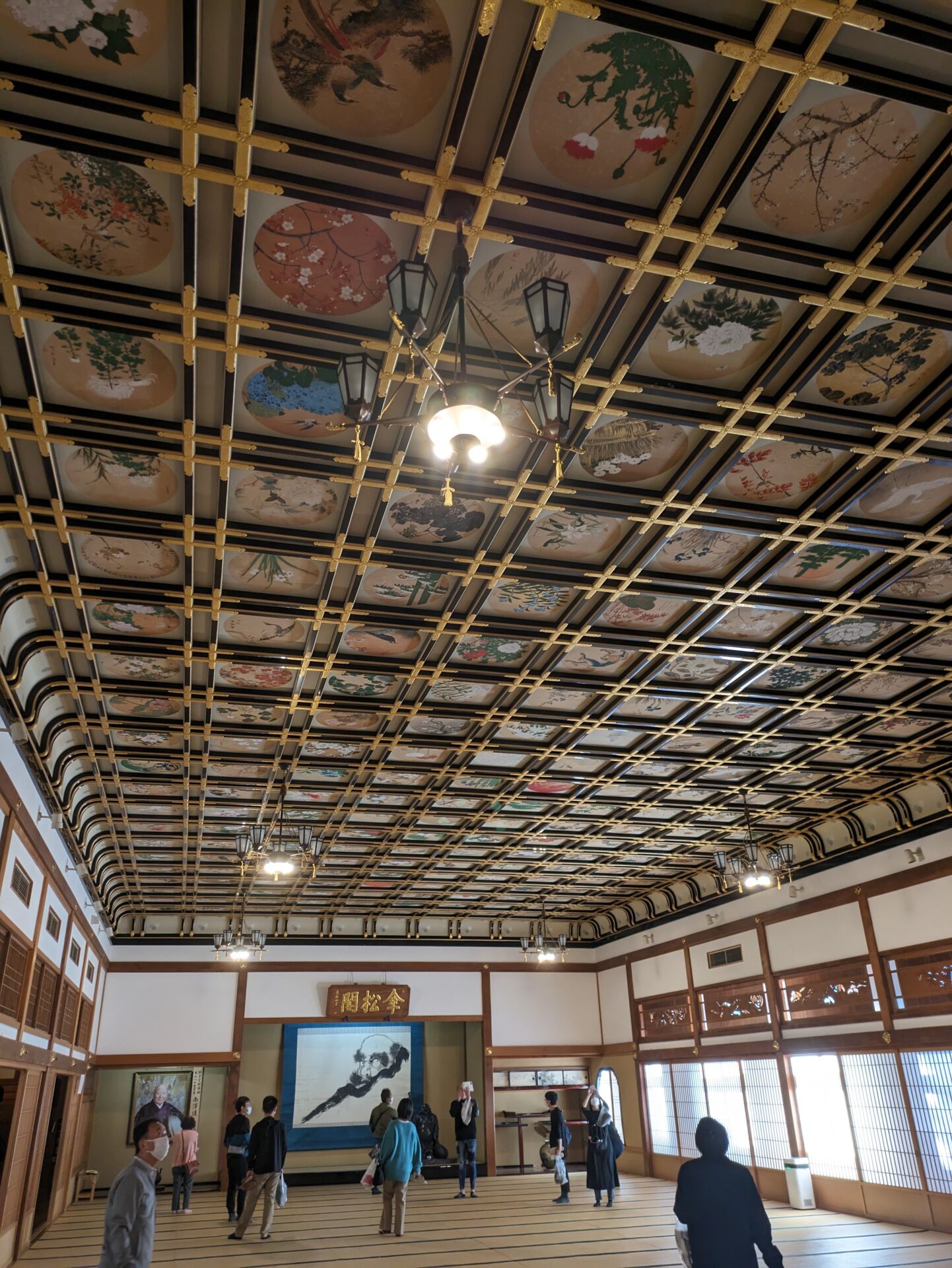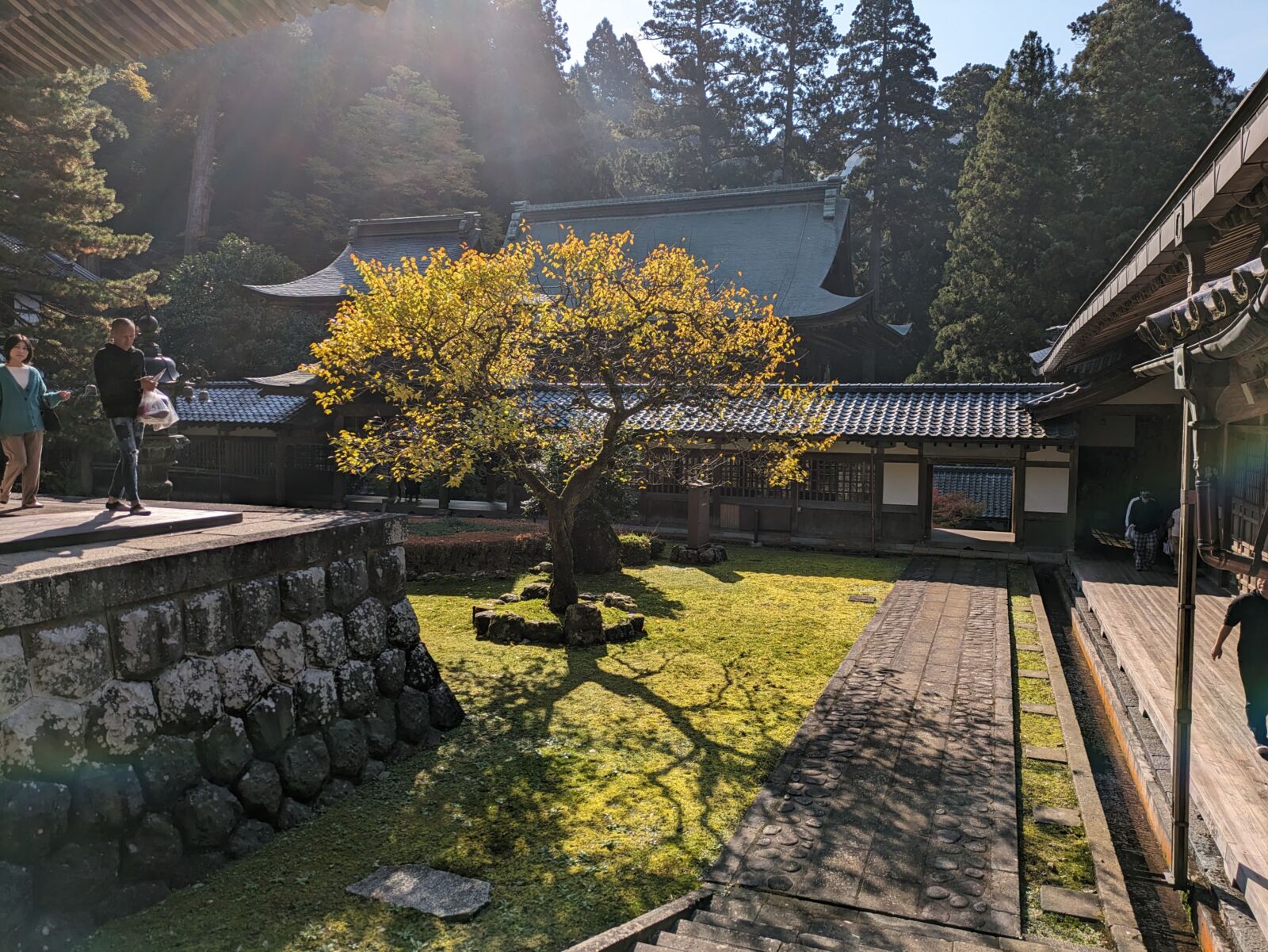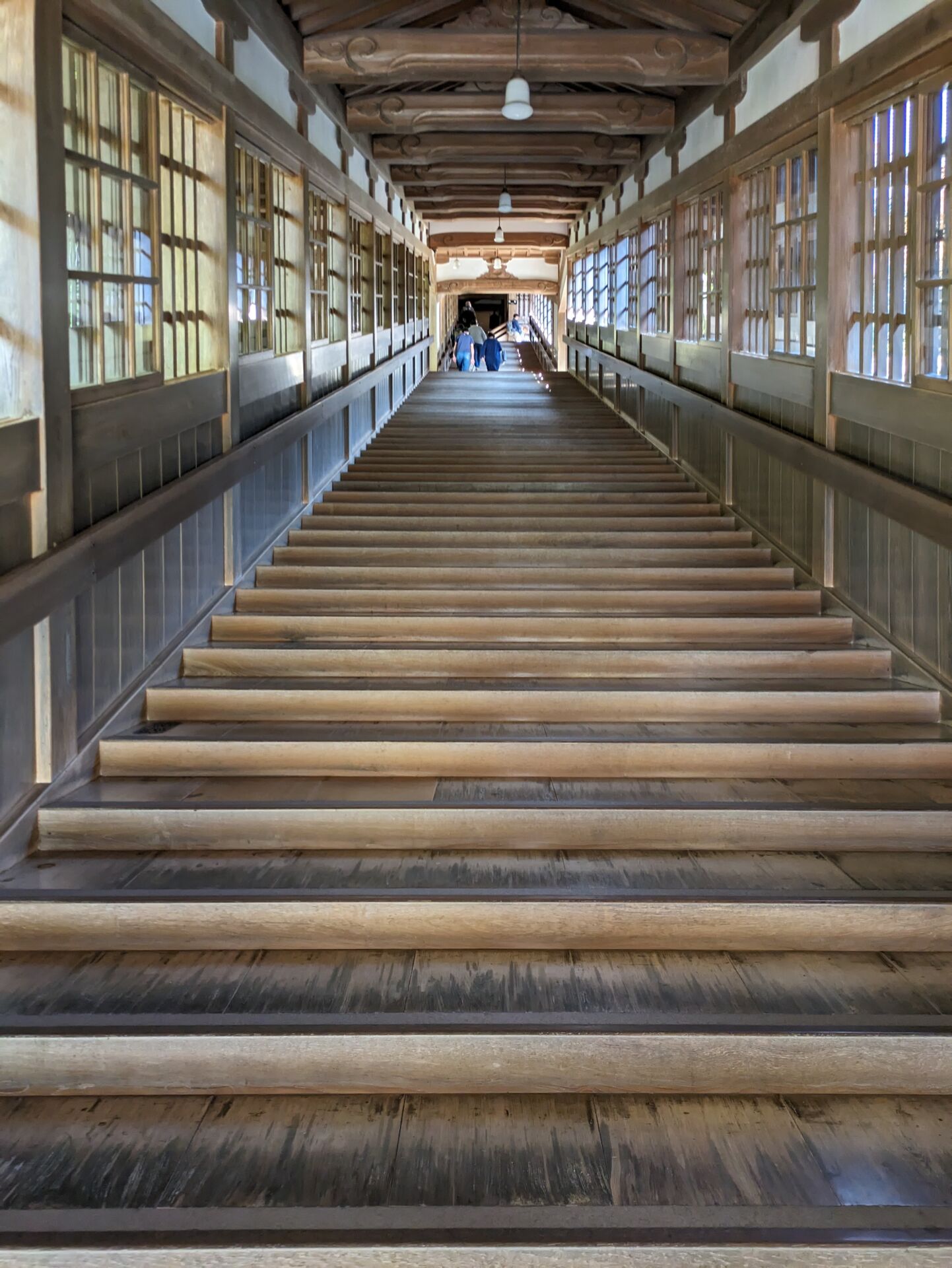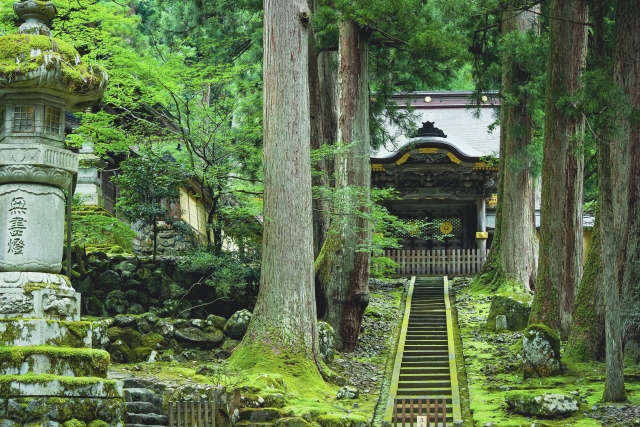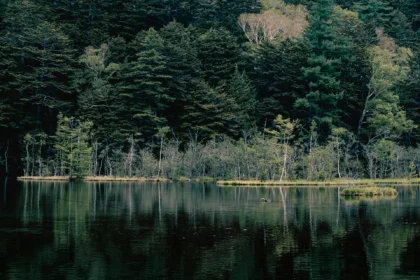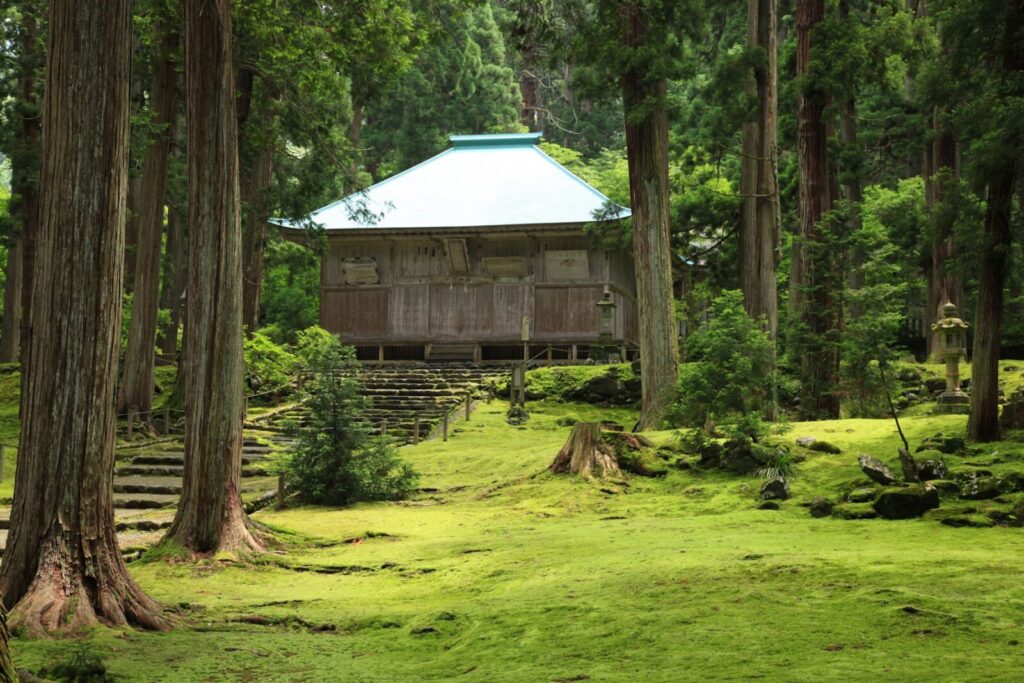
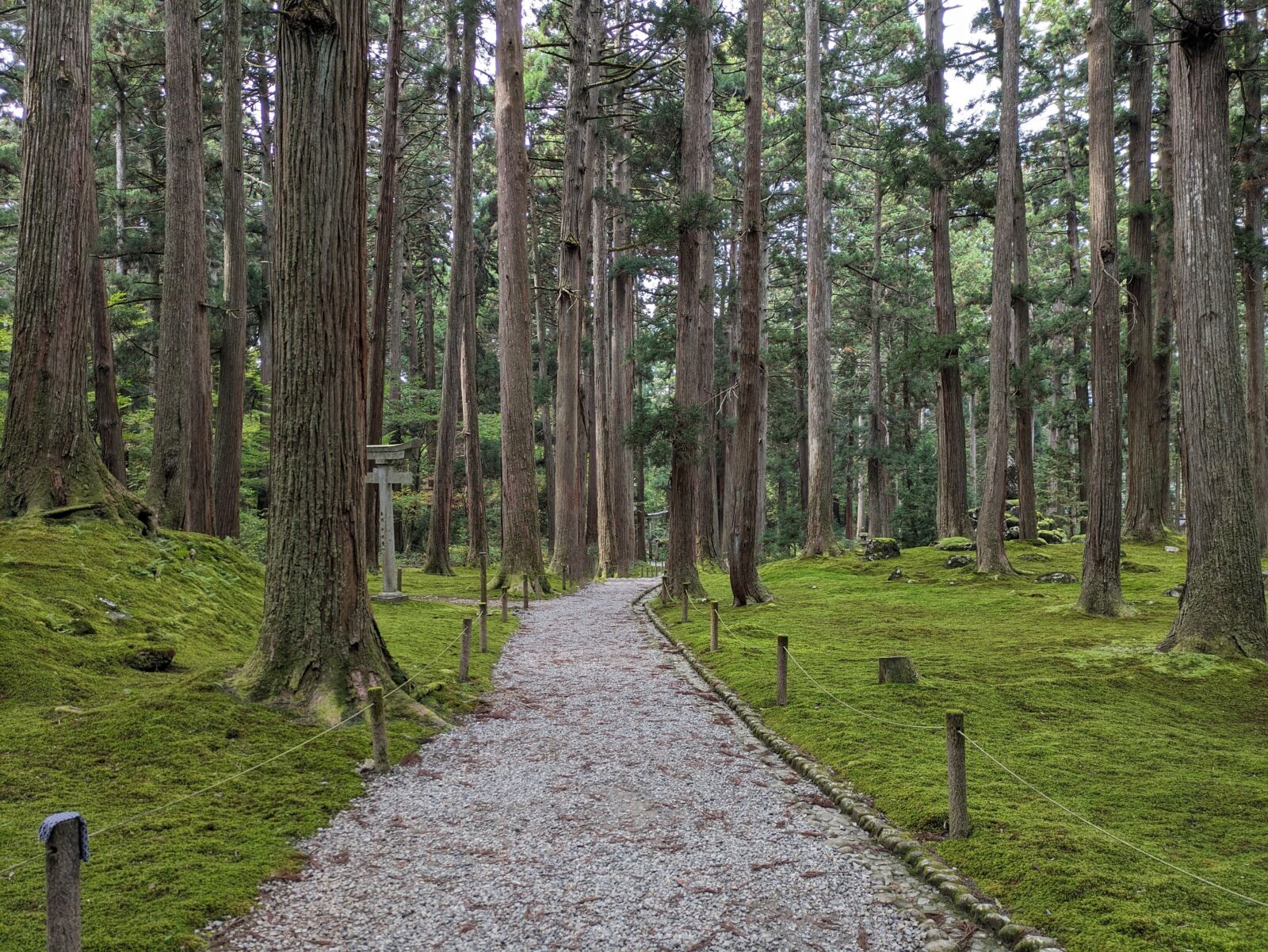
It was founded in 717 when monks sought to create a path to one of the three sacred mountains, Hakusan, from the province of Echizen. The path that the monks used still exists to this day but is considered too sacred to walk. As you walk up the stairs and down the stone paths with moss covering the the sides, it feels like a city of trees. The silence betrays the feeling that something was here, something is still here, something will always be here. The areas now beautifully forested were, until 1574, a center of religious practice. This is no exaggeration of the word "center." At its peak during the 1500s, it was the largest religious settlement in Japan with over 8,000 in residence. A massive battle with a competing Buddhist sect, the militant Ikko Ikki, led to its complete destruction and to it becoming the quiet natural religious wonder that it is today. Steeped in history and overflowing with spirituality, this shrine will make you feel like, "This is Japan."
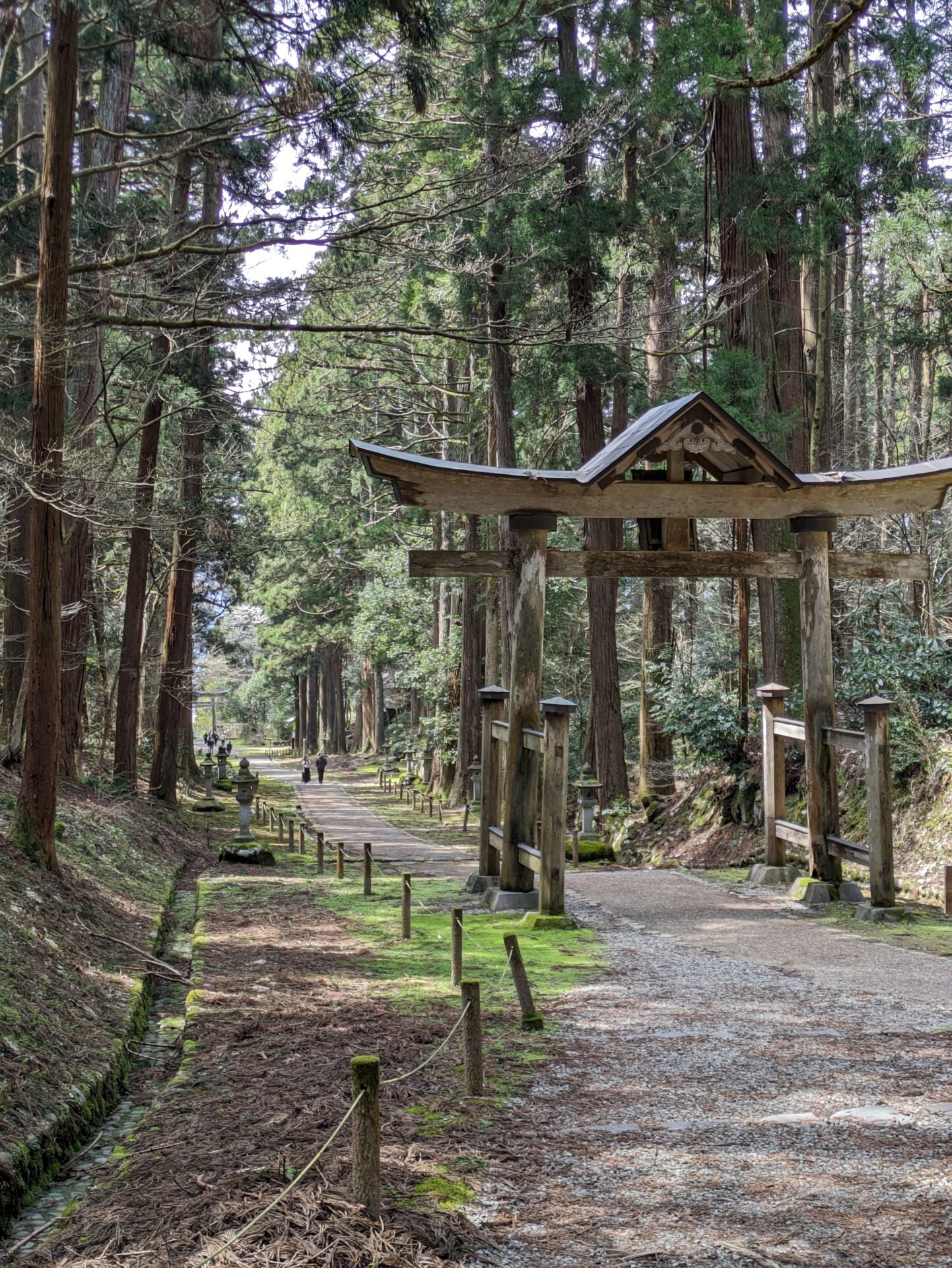
There is no direct access to the shrine from Fukui Station. The easiest way to get there is by taking the Echizen Railway to Katsuyama Station, which takes about an hour and costs 770 yen, one way. The next step is the more difficult one. There is a local bus that runs from Katsuyama Station to Heisenji but it runs infrequently, 4 times a day during the weekend and not at all during the week or from December to mid-March. There is also a bus that runs between the different tourist spots in the city that runs 3 times a day. The easiest way to get there from Katsuyama Station is to use a taxi which costs 2000 yen one way and takes 10 minutes.
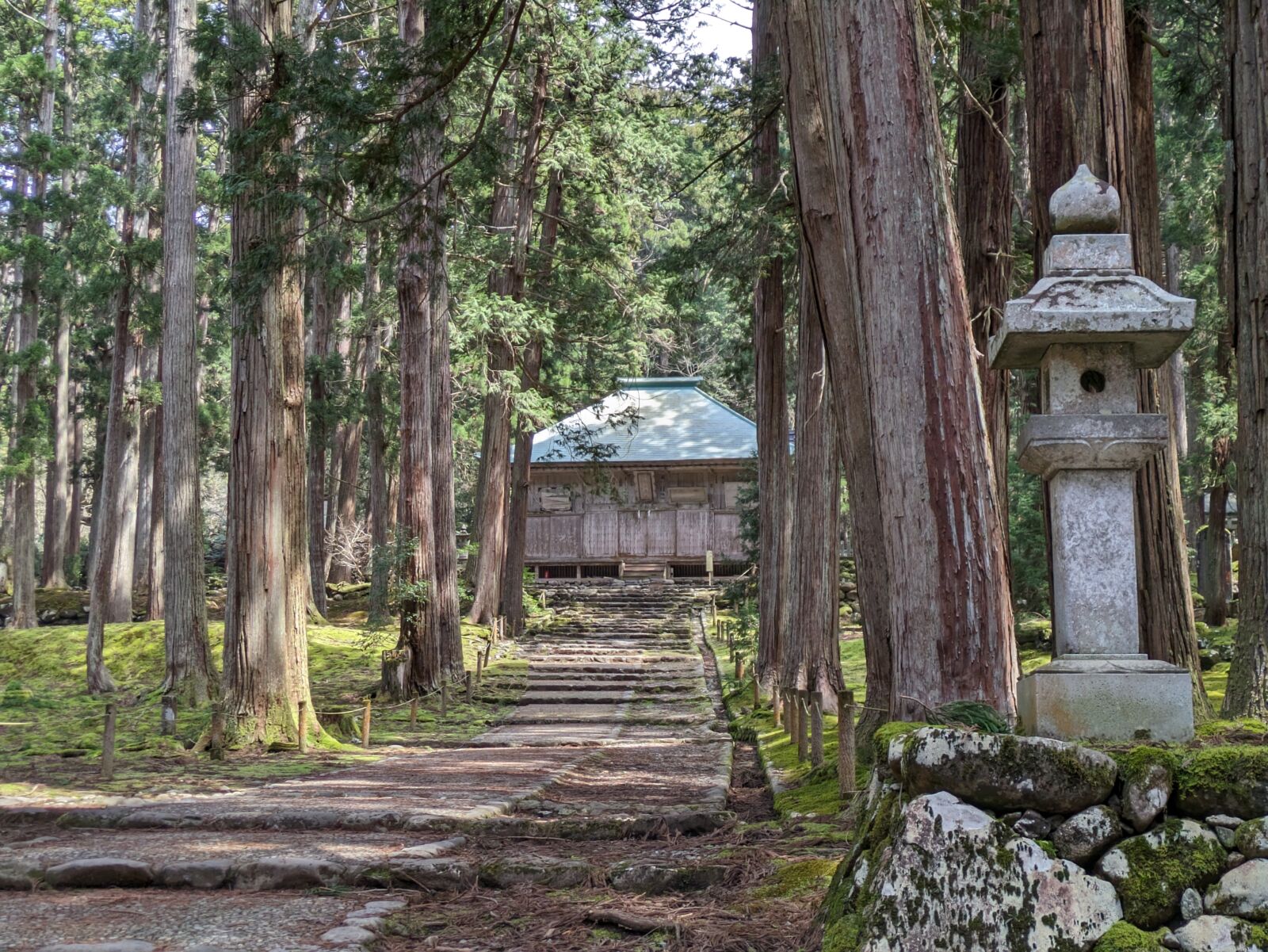
Although Heisenji Shrine is not included, if you are staying in the area there are plenty of other places to see. If you are interested in visiting some of the sights in Fukui city, such as Fukui Castle, Zuigenji Temple and the Atagozaka Slope, join us for one of of tours! It doesn’t just stay in Fukui, as well. You will have the opportunity to see Eiheiji, one of the Head Temples for Zen Buddhism, too! It is a full day of learning about the history of the area and feeling the spirituality of the Japanese mountains. See below for more information!
EIHEIJI & FUKUI CITY FROM KANAZAWA / all year round
1 Day Tour from Kanazawa: Eiheiji Temple and Fukui City Castle Town
- Spots:
- Pick-up:
- Drop-off:
As one of the head temples of the world famous Japanese Zen Buddhist sect, Eiheiji Temple is a place where you can feel the mystery and beauty of traditional architecture hidden in a natural paradise. On this tour you can choose start from either Kanazawa Station or Fukui Station. After grouping up at Fukui Station, we will take a tour of the city in the morning, seeing the castle walls, the "rainbow" shrine, and views of the city from the Atagozaka Slope. We will eat in the city before heading out on a direct bus to Eiheiji Temple. The ride into the mountains is about 30 minutes and we will arrive near the temple grounds. This area has had groupings of temples for over 500 hundred years and at its peak had thousands of monks living in the area. We will walk through the temple and learn about the history as we climb up deeper into the temple. There are many excellent photo spots to discover, too. The are so many interesting angles that catch the intertwining of nature and architecture all over the complex. Try to find the one that touches you the most!
